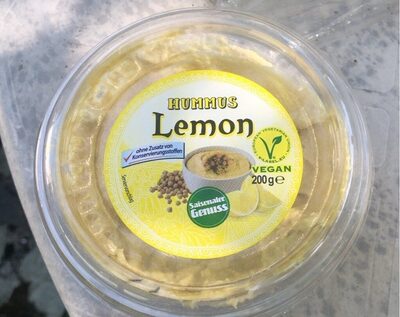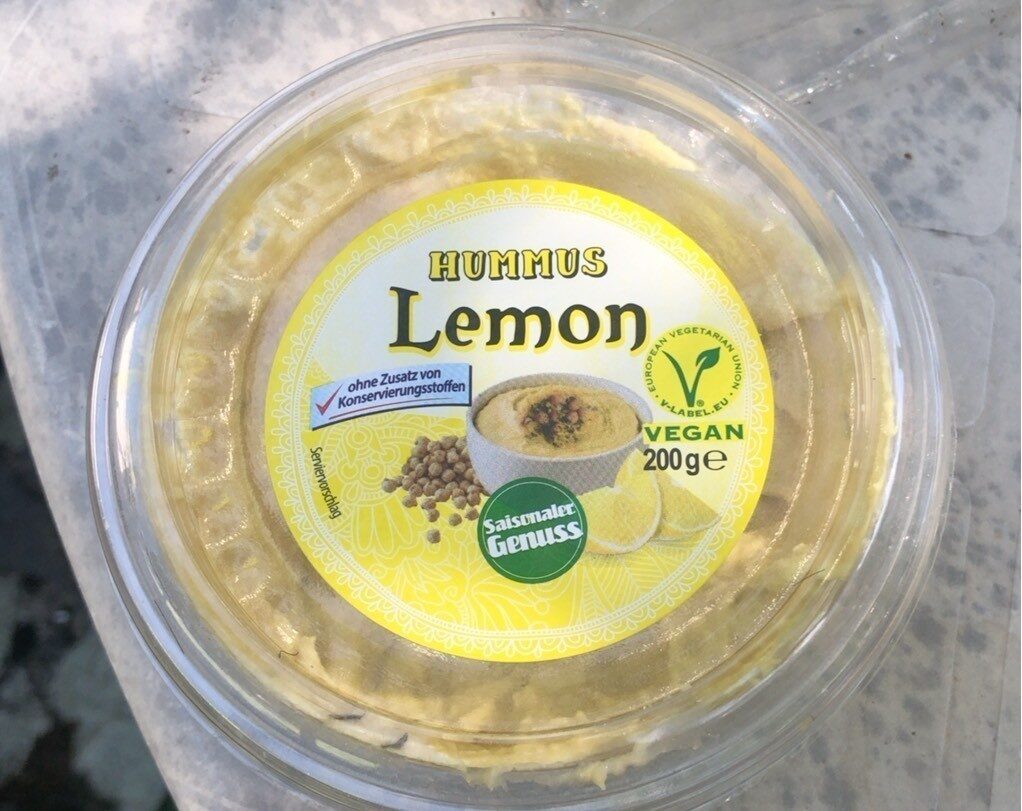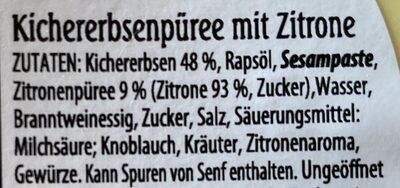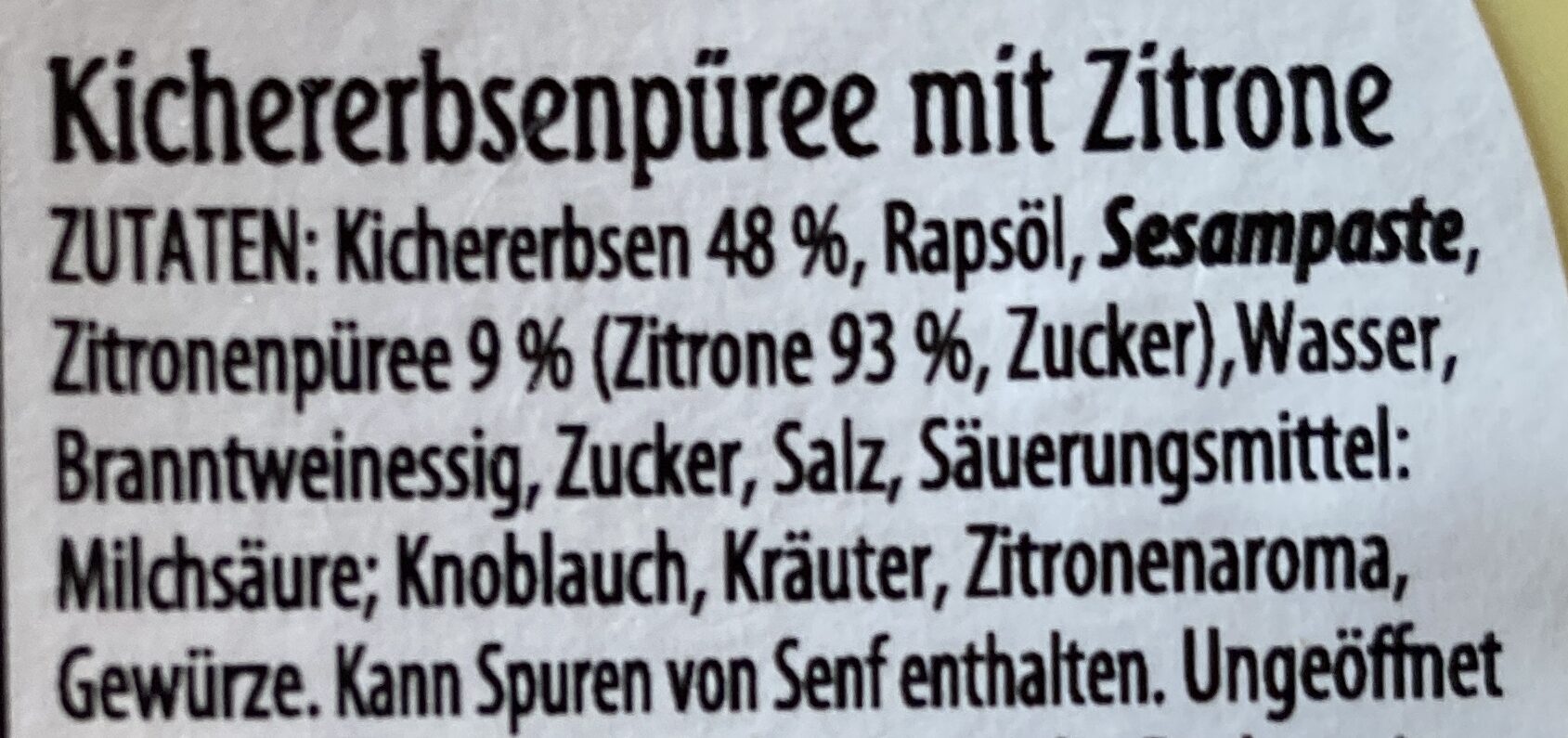Hummus Lemon - - 200 g
This product page is not complete. You can help to complete it by editing it and adding more data from the photos we have, or by taking more photos using the app for Android or iPhone/iPad. Thank you!
×
Barcode: 4061459435382 (EAN / EAN-13)
Quantity: 200 g
Packaging: Plastic
Categories: Plant-based foods and beverages, Plant-based foods, Condiments, Spreads, Plant-based spreads, Salted spreads, Sauces, Dips, Hummus
Labels, certifications, awards:
No gluten, Vegetarian, No preservatives, Vegan, European Vegetarian Union, European Vegetarian Union Vegan, Gluten free statement by manufacturer

Stores: Aldi
Matching with your preferences
Environment
Carbon footprint
Packaging
Transportation
Report a problem
Data sources
Product added on by prepperapp
Last edit of product page on by szmi.
Product page also edited by kiliweb, openfoodfacts-contributors, packbot, risajanda, roboto-app, yuka.E7JmEe6FRZMbA_P_-tMX22eAKNn5UqBFJFgSoQ, yuka.sY2b0xO6T85zoF3NwEKvllRZSuHumjHAFkfkwn2FyvurKrfwcfJoyaL-D6s, yuka.sY2b0xO6T85zoF3NwEKvlmJrbvXihw6fBiLlxn-PnoiODIb2efBOvrClDKs.











